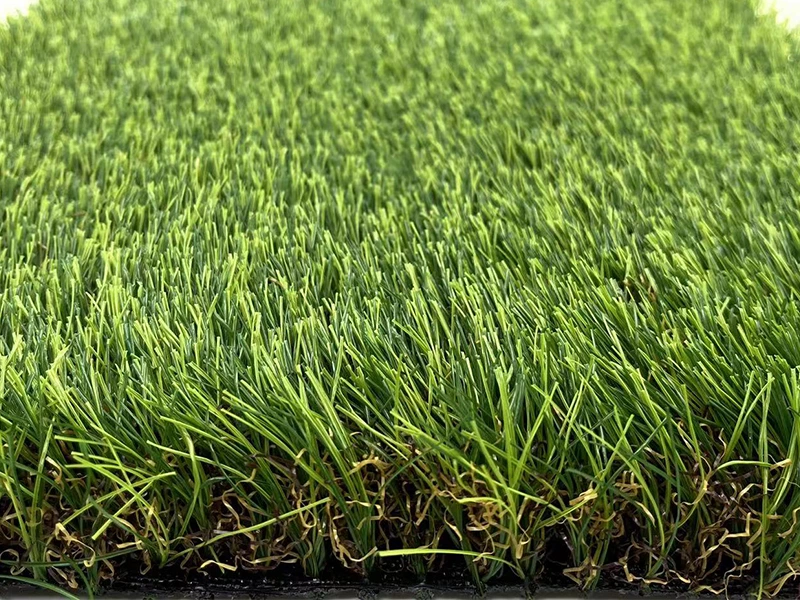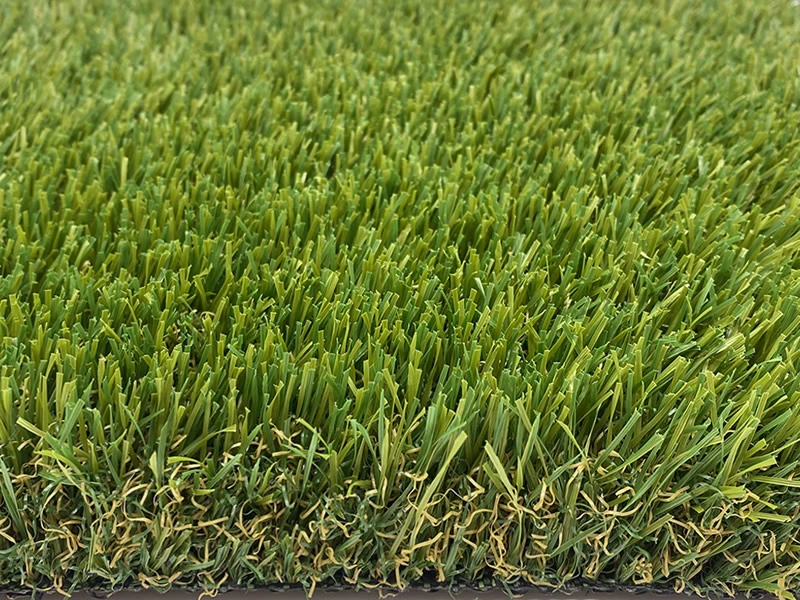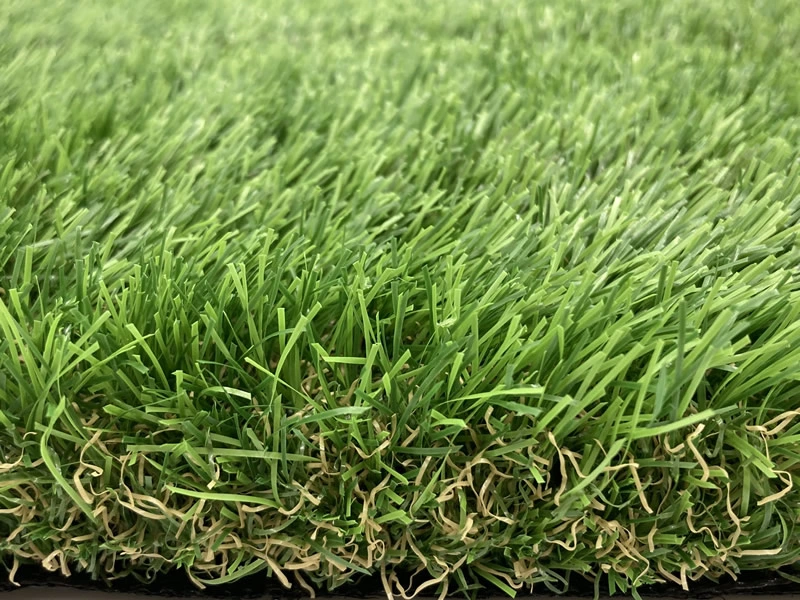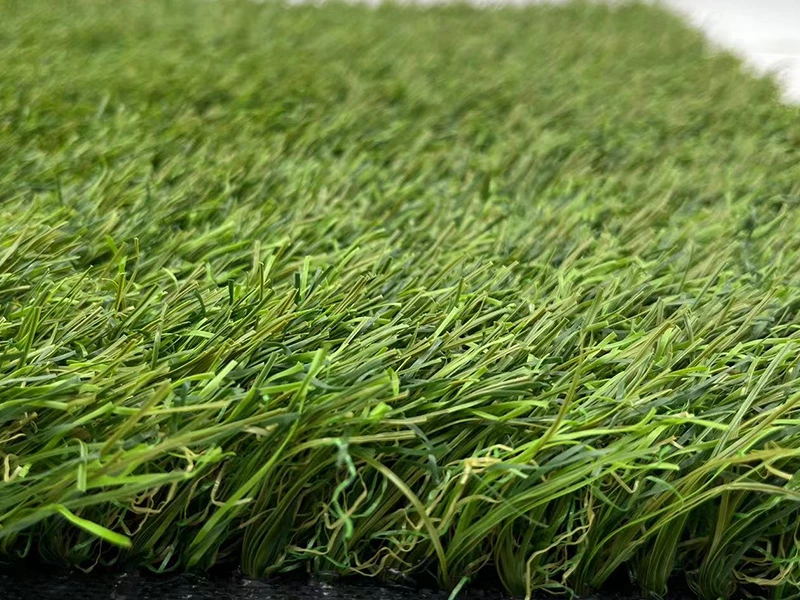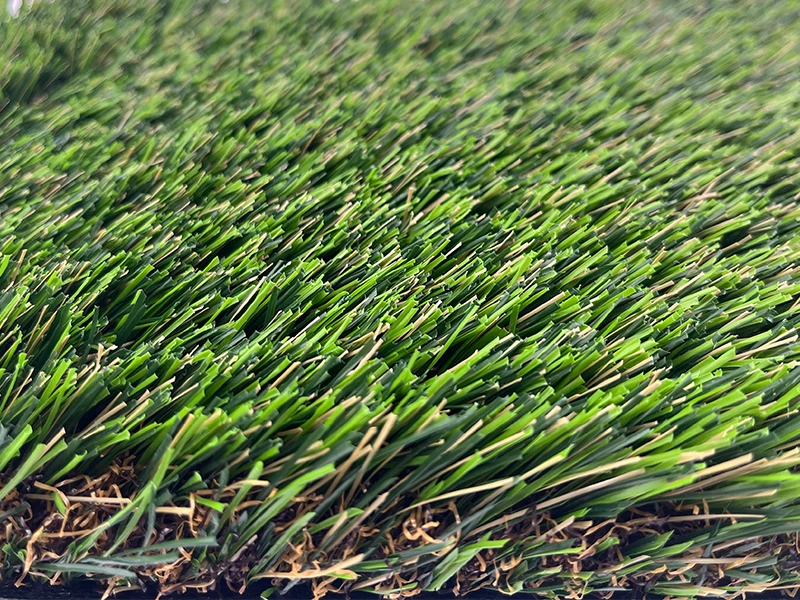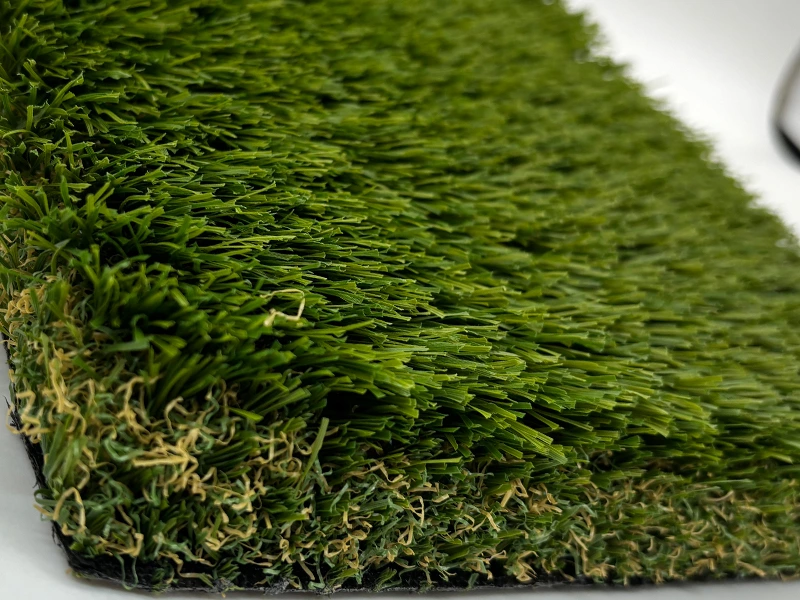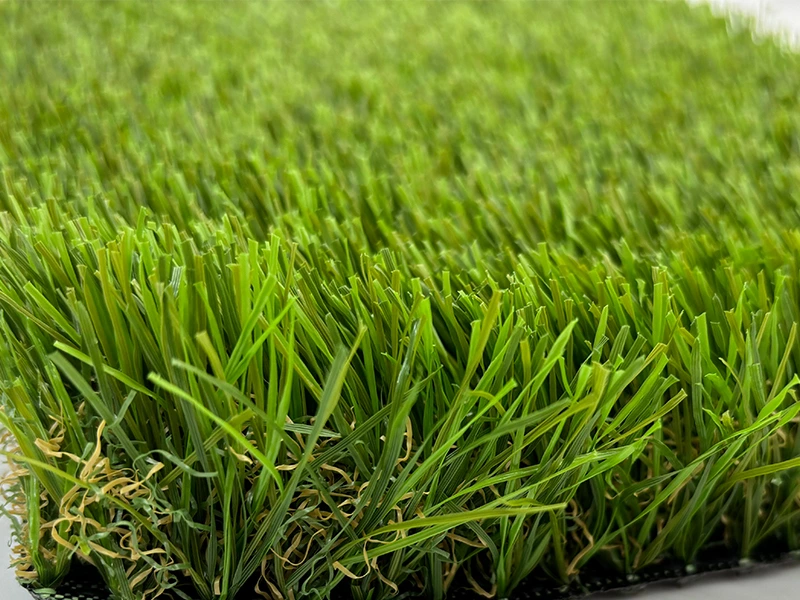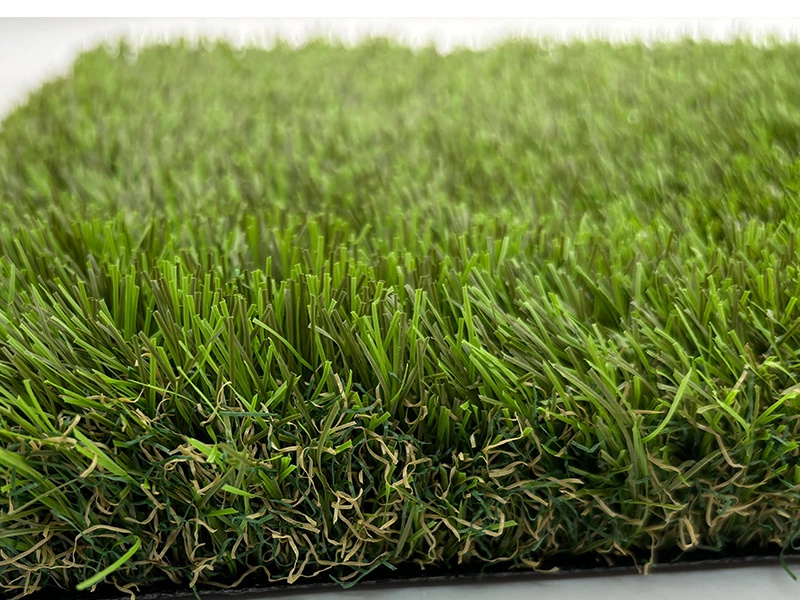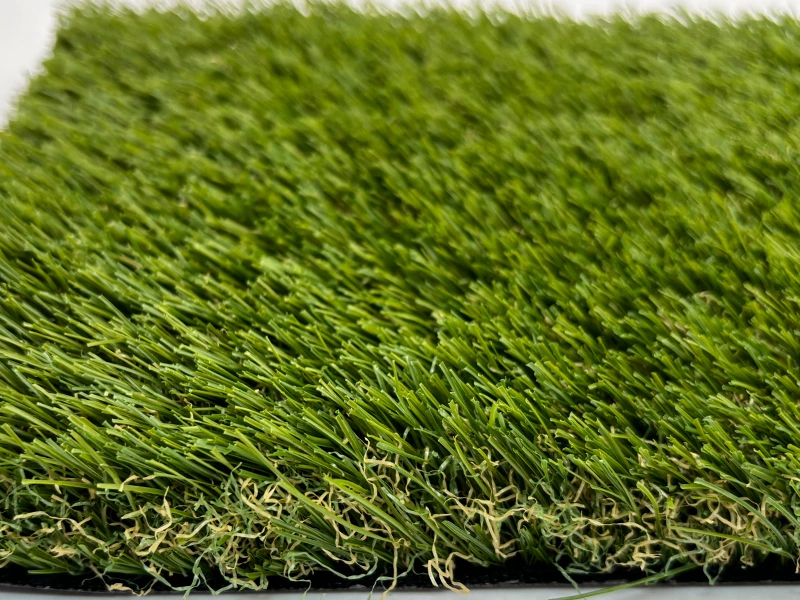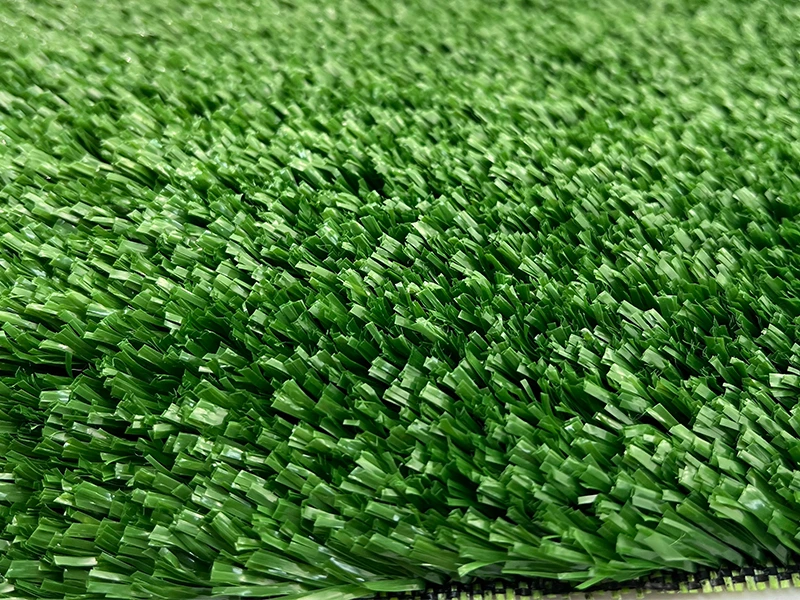High-quality, environmentally friendly landscaping artificial synthetic turf putting green grass
UNIGRASS is a leading company specializing in high-quality artificial grass synthetic lawn turf, committed to providing high-quality, environmentally friendly turf products for residential and commercial applications. Our turf products are designed to be not only beautiful and practical, but also durable and carefully manufactured to meet the needs of different sites. Whether it is to add a touch of greenery to the home garden or enhance the beauty of commercial properties, our artificial grass synthetic lawn turf can be perfectly integrated into various scenes and provide excellent results.
What is artificial grass?
Artificial grass is an artificial surface material that is designed to simulate the look and performance of natural grass while avoiding some of the drawbacks of natural grass. Artificial grass systems consist of several components:
Blades: Artificial grass blades are typically made from synthetic materials such as polyethylene, polypropylene or nylon, which closely mimic the texture and color of natural grass. The blades are tightly secured to a backing to create the effect of a continuous lawn.
Infill: Infill materials such as silica sand, recycled tire rubber particles, thermoplastic elastomers (TPE) or coated sand are often added under the blades. These infill materials not only provide weight and support to the blades, but also help the blades stay upright and increase the stability of the lawn.
Backing/Base: The bottom of the artificial grass system usually has a backing layer made of materials such as polyurethane or latex, which provides additional durability and stability to the lawn. The backing is usually perforated to ensure that the lawn can drain.
Subbase: A crushed stone base is laid under the lawn to help with drainage, and in some cases, a shock-absorbing pad is added to provide better cushioning and increased comfort.
Through these carefully engineered components, artificial grass not only mimics the look of natural grass, but also offers increased durability, stability and low maintenance requirements.
What are the advantages of artificial turf from UNIGRASS?
Artificial turf has many significant benefits that make it a great choice for many homes and businesses. Here are a few major advantages:
Evergreen all seasons
Natural lawns can lose color as the seasons change, especially during cold winter months or hot, dry summer months. Artificial turf maintains a vibrant green appearance year-round, and it stays the same regardless of the seasons. This stability makes artificial turf an ideal long-term landscaping choice.
Superior durability
Natural turf is susceptible to damage from trampling, weather changes, and other factors. Artificial turf is designed for durability and will recover after repeated use without wearing out. It can withstand the stress of pets, children, sports activities, and even the occasional parking lot, and it remains stable in adverse weather conditions. Whether it is heavy rain or freezing cold, artificial turf will not be affected, showing extraordinary durability.
Low maintenance cost
Natural turf requires a lot of maintenance such as regular mowing, fertilization, weeding, and pest control. In contrast, installing artificial turf requires almost no high-intensity maintenance. Synthetic turf does not grow weeds, does not need to be fertilized, and only requires occasional cleaning and debris removal to maintain its fresh appearance. For busy homes or businesses, synthetic turf offers a less-hassle, less-labored solution.
Environmental Benefits
Artificial turf is environmentally friendly because it doesn’t require mowing, fertilizing, weeding or chemicals. The EPA notes that conventional mowers produce emissions equivalent to 11 cars per hour. With artificial turf, these sources of pollution are eliminated. Since no harmful chemicals are used, there’s no worry about chemical runoff, further reducing the impact on the environment.
Significant Water Savings
One of the biggest benefits of artificial turf is that it doesn’t require watering. While natural turf requires about an inch of water per week to stay green, synthetic turf doesn’t require any irrigation. According to the EPA, replacing a typical suburban lawn with artificial turf can save a family about 22,000 gallons of water per year. In arid regions, this water savings is even greater. Therefore, installing artificial turf is an ideal choice that is both environmentally friendly and water-saving.
Good for Pets and Children
Active children and pets can easily make a mess on natural lawns, but artificial turf offers a solution. The durable fibers of synthetic turf can withstand active activities, and the permeable design of the bottom helps liquids drain quickly, avoiding urine stains and puddles. Although pet feces still need to be cleaned up, artificial turf will not leave traces of digging and will not wear out. It can better adapt to the daily use of children and pets in the family.
What venues does UNIGRASS provide artificial grass for?
To meet the needs of different venues, UNIGRASS offers a variety of artificial grass landscaping ideas. For residential users, our artificial turf can create natural green space in gardens, terraces, balconies and other places, creating a comfortable and casual atmosphere. For commercial venues, our lawn can not only beautify the environment, but also bring neat and orderly landscape effects to office buildings and commercial areas, and enhance the overall image.
What materials are artificial grass made of?
Artificial grass is made from different materials, mainly polypropylene, polyethylene and nylon, or a combination of these materials to achieve a more natural and long-lasting effect.
Nylon is the most durable but also the most expensive material. It can withstand high temperatures and frequent use without damage, and is suitable for places such as golf courses, backyard greens and sports fields. Due to its high cost and less natural appearance, nylon is often mixed with polypropylene or polyethylene in landscaping.
Polyethylene is the second most expensive material and is widely used in landscaping for its natural appearance, soft texture and good durability. It can handle daily activities, traffic and use without easy wear and tear, so it is particularly suitable for environments with pets. Polyethylene does not absorb odors like nylon and is easy to clean, which helps to inhibit bacterial growth.
Polypropylene is the lowest-priced and lowest-quality option. We do not recommend polypropylene for landscaping, especially in high-temperature environments, due to its poor durability. Polypropylene is soft in texture and easily retains footprints, which does not look natural enough. It can be a good choice for small-scale golf driving ranges or interior decoration.
What is the approximate cost of installing artificial turf?
Installing an artificial lawn provides an instant, evergreen effect and typically costs between $2,000 and $10,000 with little maintenance. If you choose to install an economical lawn in a smaller space, budget about $1,800 to $1,900 to complete the project.
The national average cost is about $6,500, with a typical price range of between $3,000 and $10,000. Costs on the lowest end are around $1,500, while the highest end can reach $11,000.
For a 500 square foot lawn as an example, we used an average unit price of $11.80 per square foot to calculate the average total cost across the country. The typical price range is based on the most common minimum and maximum prices per square foot. Labor costs typically account for 50% to 60% of the total artificial turf installation cost. To get the best deal, consider installing artificial turf yourself or using tools to do it yourself, which can save you $2,000 to $5,000 on a 500 square foot lawn project.
If your lawn has curved edges, is on a slope, is surrounded by a lot of shrubs and trees, or is difficult to access, the project may cost more. Additionally, edging and other landscaping services will cost extra, but they may enhance the overall look and make the installation more worthwhile.
What is the surface weight of artificial grass?
The surface weight of artificial grass refers to the number of ounces of grass fiber per square foot, not including the backing (the material used for stitching) of the grass. Generally speaking, the surface weight ranges from 30 to 90 ounces. For residential use, it is recommended to choose a product with a surface weight of 50 to 80 ounces.
A higher surface weight generally means a denser grass with better durability and the ability to withstand more foot traffic. This type of artificial grass is not only more durable, but also has a fuller and more natural feel. It is important to note that the surface weight affects the price, and generally the higher the surface weight, the higher the price. Keep in mind that the surface weight is different from the total weight or backing weight, so make sure you know the correct number when choosing.
How to install artificial turf in your garden or backyard?
Installing artificial turf in your garden or backyard is a do-it-yourself project. Simply follow these steps to achieve long-lasting, beautiful results:
1. Prepare tools and materials
Tools: shovel, hoe, level, wheelbarrow, glue applicator, scissors or mowing blade, roller compactor.
Materials: artificial turf, gravel, sand, lawn spikes or adhesive, geotextile (anti-weed cloth).
2. Clean the ground
Remove existing turf and debris: Use a shovel to remove all weeds, plants and garbage, and make sure the ground is level.
Digging: Dig the soil to a depth of 5-10 cm to remove roots and prevent future weed growth.
3. Create a foundation
Lay a gravel layer: Fill the gravel layer to a thickness of about 5 cm and compact it with a compactor.
Add a sand layer: Spread a layer of fine sand (about 2-3 cm thick) on the gravel layer, using a level to ensure flatness.
Install the geotextile: Cover the entire foundation to prevent weeds from penetrating the lawn.
4. Cutting and laying the lawn
Cutting artificial turf: Cut the lawn with a mower or scissors according to the shape of the area.
Adjust the direction of the lawn: Make sure the grass strands are in the same direction to look more natural.
Laying the lawn: Spread the lawn and make sure the edges are seamless.
5. Fix the lawn
Fix the edges: Use lawn nails to nail the edges every 15-20 cm.
Or apply special lawn glue on the edges to stick the lawn firmly.
Treat the seams:
Use seam tape and adhesive at the seams.
Butt the two lawns tightly and compact them.
6. Filling particles (optional)
Filling with quartz sand or rubber particles: Use a sand spreader to spread evenly to help the lawn stand up and prevent movement.
Brush the grass strands: Use a stiff brush or lawn brush to brush the grass strands straight.
7. Check and clean
Check and fix: Make sure there are no warps or uneven spots on the lawn.
Sweep the surface: Remove debris left over from the installation process and complete the cleaning.
8. Daily maintenance
Remove fallen leaves and debris from the lawn regularly.
Hose with water to keep it clean.
Avoid sharp objects from scratching the lawn.
Tips:
Ensure proper drainage design to avoid water accumulation.
High-quality lawns are usually more durable. When purchasing, pay attention to their density and grass height.
What are the blade shapes of UNIGRASS artificial grass?
The blade shape of artificial turf affects cost and function, and the choice needs to be made based on usage needs. The following are common blade shapes and their characteristics:
S-shaped blades: have naturally curved lines, are soft to the touch and look, and simulate the effect of real lawns. Its rounded contour can effectively reduce sunlight reflection, making the color brighter and dark green. Suitable for areas with less traffic, and average resistance to trampling.
C-shaped blades: provide better elasticity and wear resistance, suitable for heavy trampling environments. C-shaped blades are usually brighter and suitable for activity areas such as backyards.
U-shaped blades: This structure makes the lawn more flexible, the leaves are full and thick, and can maintain good compression resistance under moderate to heavy trampling. It has a low gloss and is a durable choice.
V-shaped blades: have excellent wear resistance and fast rebound performance. V-shaped blades can still maintain a good shape after heavy trampling, which is very suitable for places with high traffic.
M-shaped blades: This design distributes pressure evenly across multiple points, providing superior durability. Suitable for venues with high foot traffic, ideal for events such as sports and parties.
W-shaped blades: With excellent resistance to trampling and heat dissipation, they can maintain good condition in high temperature environments. Suitable for outdoor areas exposed to the sun.
Diamond-shaped blades: The look and feel are closest to natural grass, very soft and luxurious, with the focus on feel and texture rather than durability. Suitable for places with low to medium foot traffic.
Omega-shaped blades: This shape of lawn is usually shorter and soft to the touch, with good resistance to trampling, suitable for homes with pets.
Choosing the right blade shape according to your needs can better balance budget and performance.
Does UNIGRASS have customized artificial lawn services?
In addition to traditional uses, our products are also designed for special venues. UNIGRASS's pet lawn is not only wear-resistant and scratch-resistant, but also easy to clean, providing an ideal activity space for pets and owners. The gym lawn has a good buffering effect, which can effectively reduce the impact on joints during exercise, and improve the sports experience and safety. In addition, our lawn is also widely used in golf courses and greens, providing a professional-level playing experience.
